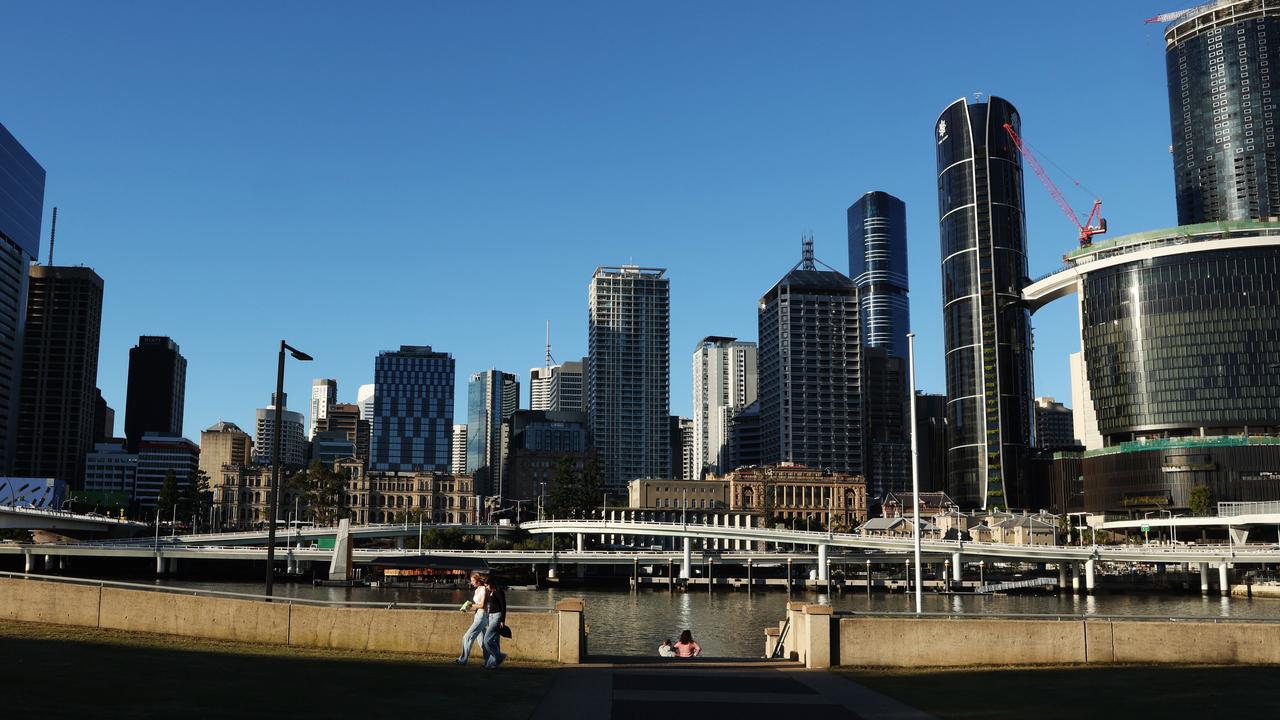Good news for stocks with US soft landing in sight
Stronger than expected US economic growth is aligning with tame inflation, fuelling expectations of interest rate cuts.

Business
Don't miss out on the headlines from Business. Followed categories will be added to My News.
Stronger than expected US economic growth is being viewed favourably by the sharemarket as it comes with tame inflation, fuelling expectations of interest rate cuts and a soft landing.
The combination of higher than expected US economic growth and lower than expected inflation data pushed the S&P 500 up 0.5 per cent to a record high near 4900 points on Thursday even as Tesla dived 12 per cent after its quarterly earnings report and outlook disappointed investors.
A year ago the popular view was that the Fed’s rapid rate hikes would trigger a recession within 12 months. Central banks had limited success achieving soft landings in the past and inflation was still well above the Fed’s 2 per cent target despite 425 basis points of rate hikes since March 2022.
The chance of a US recession – narrowly defined as two consecutive quarters of negative economic growth – had just hit 70 per cent for the year ahead. The Fed was expected to hike rates twice more by May and then deliver at least one cut by December.
The Fed ended up hiking four times then holding rates steady. But inflation fell much faster than expected and economic growth was more resilient than expected.
As the US 10-year bond yield soared to 5 per cent in October, Fed officials began to acknowledge that higher bond yields could substitute for rate hikes. At their subsequent meeting, chair Powell said the FOMC is “proceeding carefully”, reinforcing expectations that rate hikes ended in July.
In December, Powell said the timing of rate cuts was discussed, and officials increased their interest rate cut projections – three months after they spooked investors by dialling back those projections.
As US inflation data undershot expectations and the jobs market stayed firm, the consensus estimate of US recession probability in the next 12 months fell to 50 per cent.
Jefferies put that risk at 70 per cent, but Goldman Sachs said it was only around 25 per cent.
The US GDP core personal consumption core price index fell from 6 per cent in the March quarter to a downwardly revised 2 per cent in the September quarter – in line with the Fed’s inflation target – and stayed there in the December quarter, making it the second quarter of on-target PCE inflation.
US GDP growth bottomed at 2.1 per cent in the June quarter before rising to 4.9 per cent in the September quarter and a higher-than-expected 3.3 per cent in the December quarter.
Monetary policy works with long and variable lags but a year and a half after rate hikes started the US economy was growing well above its estimated long-term potential rate of just under 2 per cent.
“Contrary to expectations at the start of last year, tighter monetary policy and credit conditions did not lead the US economy into recession,” said Stephen Innes, managing partner at SPI Asset Management. “Suffice it to say the Federal Reserve hasn’t achieved its goal of fostering growth below the trend, but so long as inflation remains on trend, one could surmise that is a good thing.
“Still, it will undoubtedly make for an awkward Fed meeting next week as historical modelling suggests what we see across the US economy should not be happening.”
December quarter US growth was fuelled by solid spending by consumers and the government.
Growth was flattered by a rise in inventories and business surveys and the Chicago Fed diffusion index indicated that GDP growth in the first quarter could be much weaker. But after observing two consecutive quarterly core inflation readings of 2 per cent, the Fed can declare victory over inflation.
Mr Innes said it’s a “Goldilocks scenario” and an “unambiguous positive inflection point” for stock investors as it opens the door for rate cuts in the second half of the year.
Still, Citi economists said the key question of early-2024 will be whether lower bond yields and looser financial conditions will restimulate demand enough to prevent further weakening.
“This may be the case for some rate-sensitive sectors like housing and durable goods, but it is unclear if looser financial conditions can delay further weakening in the labour market that has become clear in details of recent labour market data,” said Citi senior economist, Veronica Clarke.
“A weaker labour market backdrop would suggest consumption also finally starts to weaken.”
While market pricing now implies the Fed will cut rates at least six times this year, TD Securities said geopolitical events and buoyant consumer spending create a risk that inflation could pick up again.
“The first rate cut and the pace of cuts thereafter will likely be slower than current market pricing implies,” said TD chief economist, Beata Caranci.
She sees “virtually no economic sacrifice” in response to the massive 525 basis points lift in the interest rates from its post-pandemic low near zero.
In fact, the US economy expanded at a faster pace in 2023 than 2022.
“The dynamics of excess savings, fiscal stimulus, strong wage growth and sturdy labour demand have created a fortress of resilience, even with the economic impulse from each of these metrics lessening with the passage of time,” Mr Caranci said.
“Doesn’t this argue that the Federal Reserve can afford to wait a bit longer before cutting interest rates to mitigate the risk of stoking demand-side inflation?”
The Fed’s own analysis has demonstrated that demand-driven inflationary pressures are still elevated relative to pre-pandemic, and the supply side has yet to fully normalise.
On top of that, recent geopolitical risks in the Middle East have doubled freight shipping costs in 2024, and this isn’t an economy that screams urgency on cutting interest rates.
Originally published as Good news for stocks with US soft landing in sight





